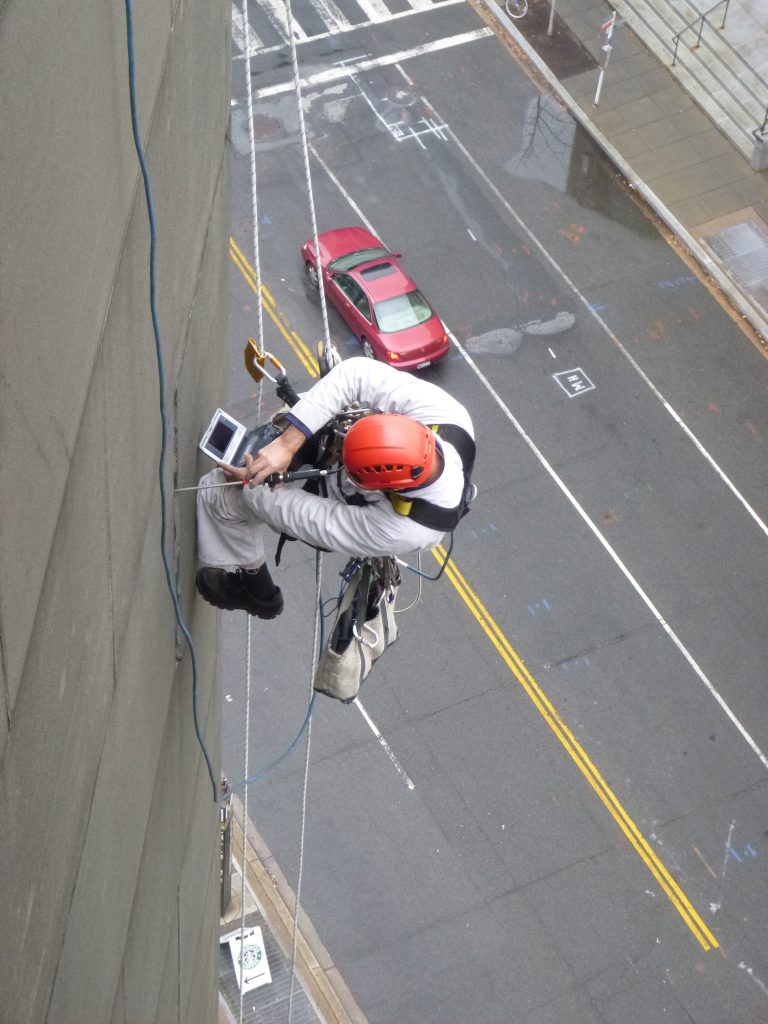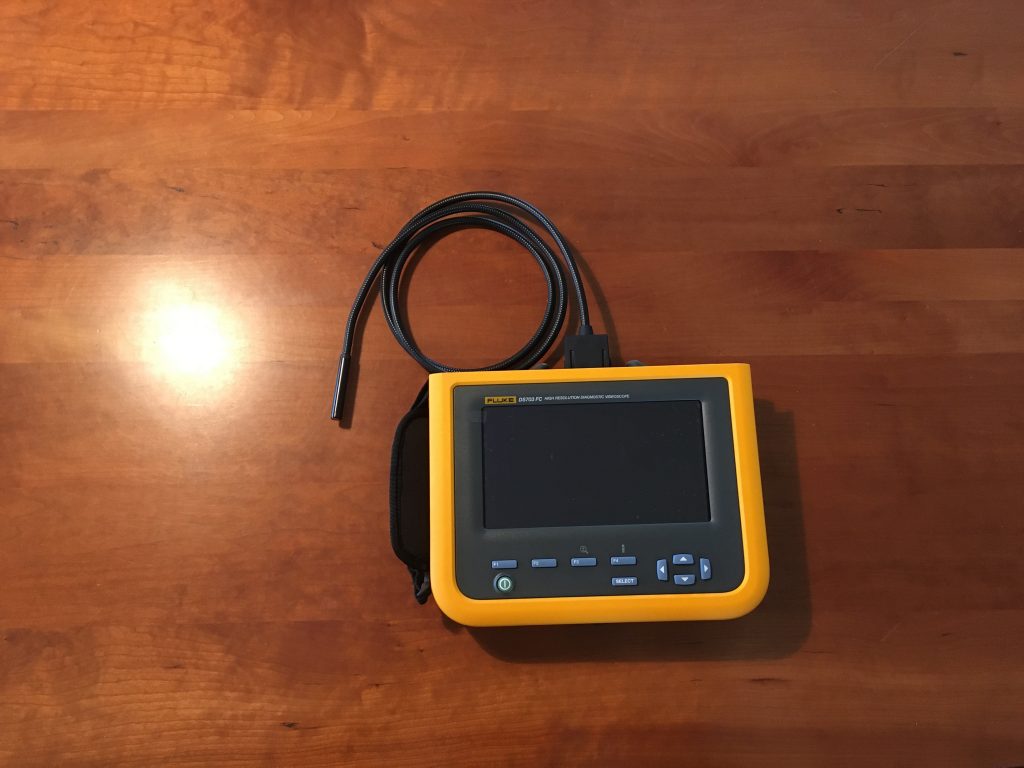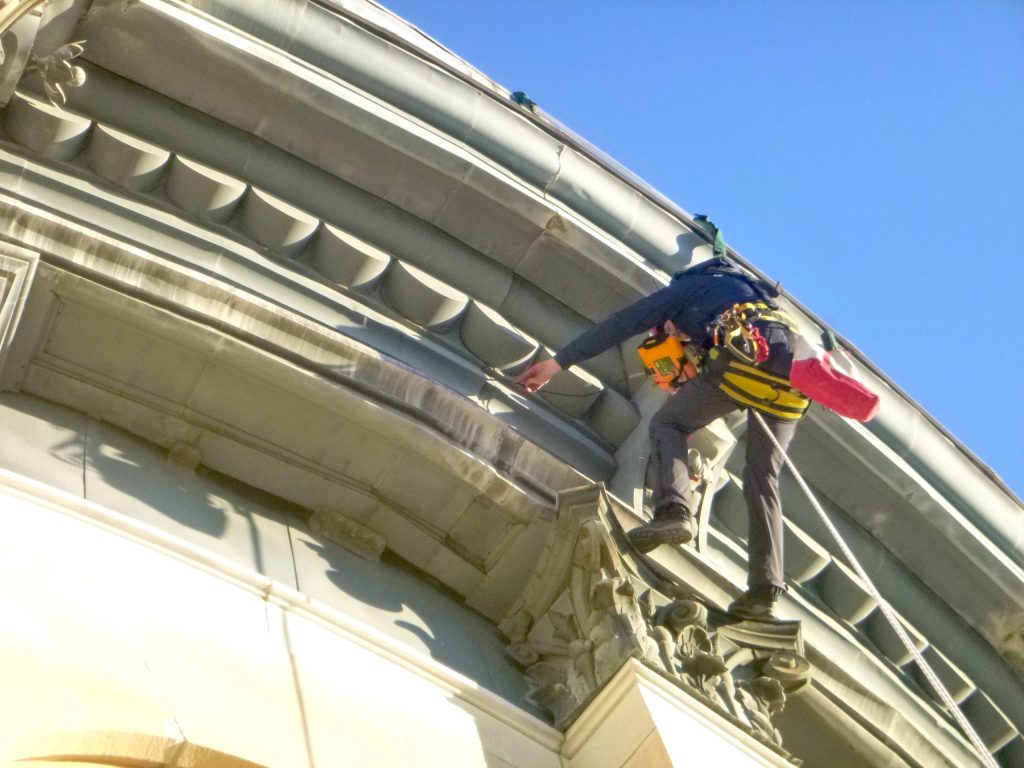In an effort to offer clients the best possible services in challenging access situations, Vertical Access has purchased a new diagnostic borescope to replace our older video enabled borescope system that we bought 25 years ago. Vertical Access uses these devices to afford minimally invasive observations to seeing behind cladding materials as well as any other hidden spaces we are asked to investigate. This upgrade features on-board, all-in-one light source, video screen, and recording capabilities.
Modern day borescopes, which are more industrial versions of the endoscopes first created in the early 1800s[i], generally refer to any device that provides a view of what is going on within an inanimate structure through a small opening.
Borescopes originally referred to small diameter scopes with different angles of view for different applications, but it is generally assumed in modern applications that a camera and a light source are connected or included in the setup. The scopes are traditionally long rigid lenses (rigid borescopes) or flexible fiber optic varieties (flexible borescopes or fiberscopes). Some of the newer styles available simply have a video camera on the tip of a flexible cable. This particular variety is sometimes referred to as a videoscope because the camera sensor is permanently integrated into the system, but they are still covered under the general definition of a borescope.
Vertical Access’s newest tool is the Fluke DS703 FC Diagnostic Scope. This videoscope replaces our current setup, which was composed of an Olympus ILV-2 light source with Hawkeye lens scopes. This will complement a 200’ fiber optic scope called the SeeSnake® that Vertical Access still uses for applications such as drain investigations.

The Fluke DS703 FC Diagnostic Scope incorporates a 7-inch touch display screen with a 0 and 90 degree lens system on the end of a 4 foot flexible cable. It provides all of the capabilities of the old borescope system at a fraction of the size complete with wifi connectivity and 6GB of internal storage.

The connectivity that is made possible by adding a mobile phone will have important implications for immediate feedback in the field. A technician on the ground will be able to connect and download what the technician on rope is seeing before the test location has been left, should there be questions about what else the client wants to see.
With the addition of an HDMI cable, Vertical Access will also be able to provide live video through the diagnostic scope. Most importantly, this new scope no longer requires an extension cord to power the light source. Coming in at 2 pounds, this fully integrated system will be a huge asset in the fieldwork to come.

[i] https://www.olympus-global.com/technology/museum/endo/?page=technology_museum